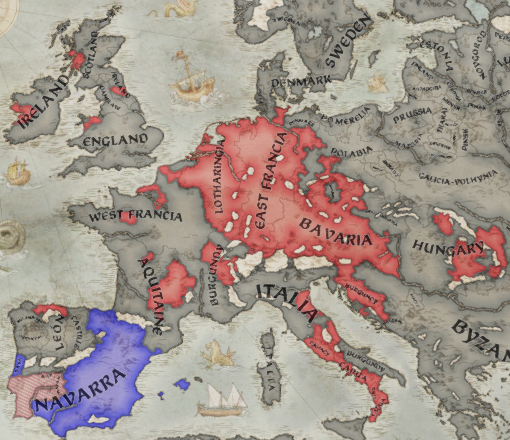First Catholic Crusade: The Call of Innocentius II

On the 1st of February of the year 1023, Pope Innocentius II gave a fiery speech asking Catholic rulers across Europe to take arms against all enemies of the Cross in Iberia. In his speech, the Pope recounted atrocities committed by the heretic King Tibalt of Navarra against the true Christians of Iberia. He railed against the false Pope of the heretics, Sturla of the Mozarabic Papacy, who had proclaimed that all of Iberia belonged to Tibalt.

Sturla was the third Mozarabic Pope after ties with Rome had been broken offically 70 years ago by Haesteinn II, King Tibalt's grandfather. For the past seven decades, there had no need for any united Catholic action against the Mozarabic rulers of Navarra and Sturla's proclamation that Innocentius II railed against had been made more than two decades ago. Modern historians have found very little evidence of the supposed Mozarabic atrocities against Catholics that Innocentius II claimed was taking place in Iberia at the time. In fact, the only record of the Mozarabic rulers of Navarra attacking Catholics before the 11th Century was when Haesteinn the Thief-Slayer invaded the Catholic Basques in 867. After the Thief-Slayer was crowned the first Mozarabic Bikingo ruler of Navarra in 890, the kingdom had solely focused on expanding south at the expense of the fractured Iberian Muslim taifas.

The first five Haesteining rulers of the Kingdom of Navarra
So, the question arises. Why did Innocentius II suddenly call for a great holy war against Navarra? It was feared that the current king of Navarra, who had come to be known as the Conquistador for conquering all other taifas with the exception of the remaining four (Baya, Batalyaws, Burtughal and Kulumriyya), would target the Catholics in the peninsula next. It was this fear that had prompted King Ordunu III of Castille to sign a decade-long truce with the Conquistador. Ponce II, the Duke of Asturias and the regent for his 11 years old king Ordunu II of Leon, had some other idea. Initially, he pleaded with the Karling rulers of nearby Catholic kingdoms of Aquitaine and West Francia for military support against Navarra. After his requests fell on deaf ears of the Karlings who were busy with their own internal affairs, the Duke of Asturias met with Innocentius II in Rome and found him extremely sympathetic to his cause. The Pope, an Occitan who hailed from Aquitaine and knew of Navarra's military dominance within Iberia, saw this as a great opportunity for the squabbling Catholic rulers of Europe to unite in a singular cause. Thus, the First Catholic Crusade was declared against the Mozarabic Christians of Iberia.

Catholic rulers of Iberia in 1023
Last edited:
- 3
- 1



























